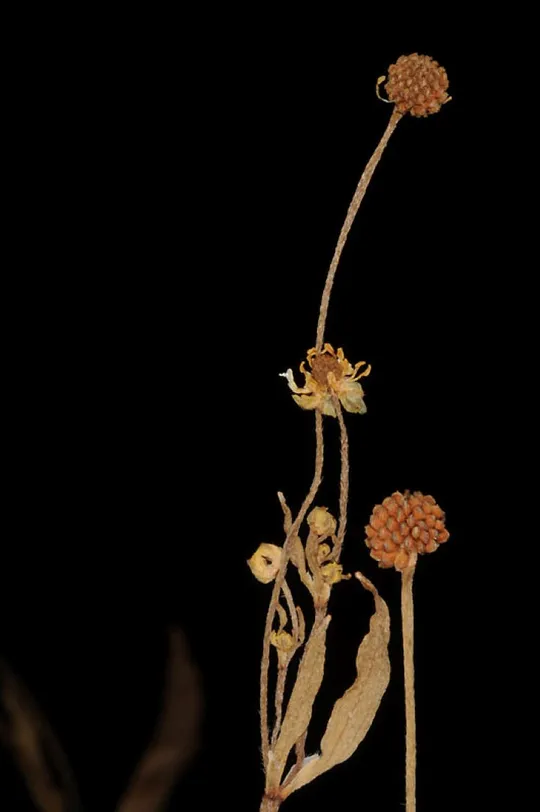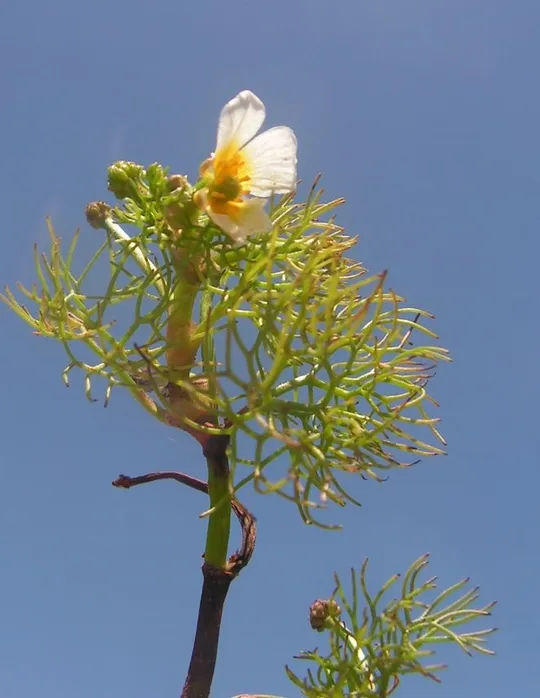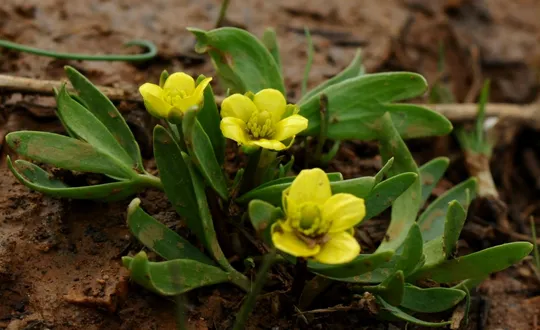Yellowish Meadow-rue
Thalictrum isopyroides
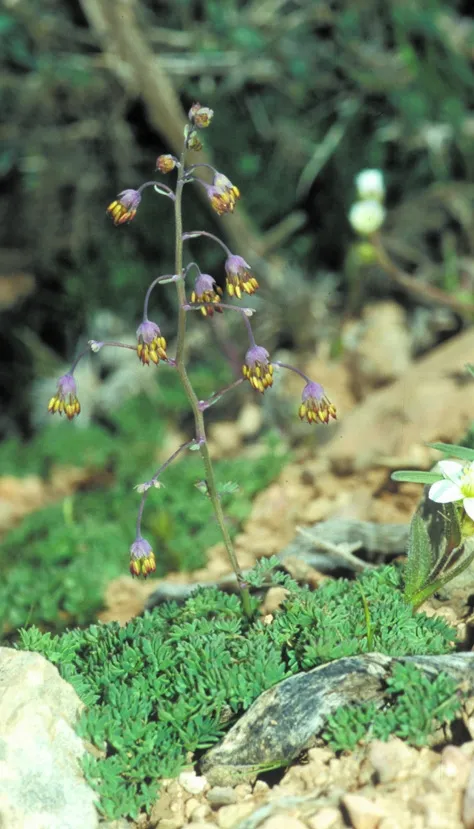
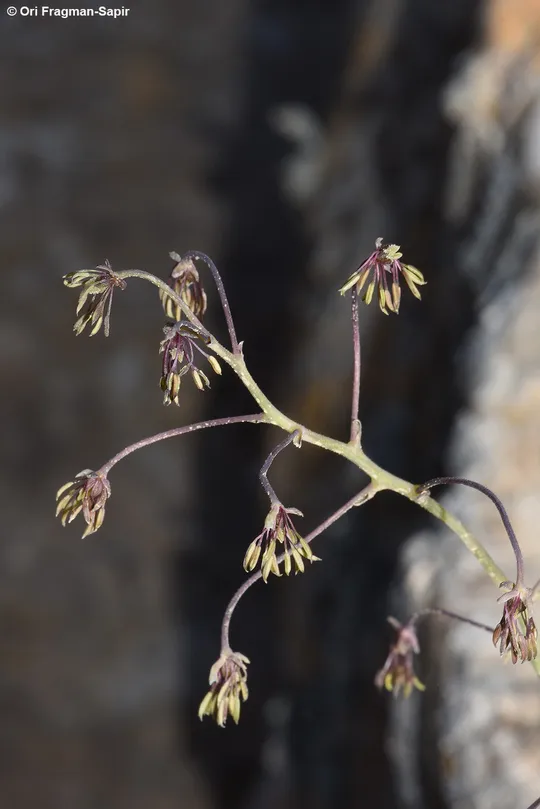
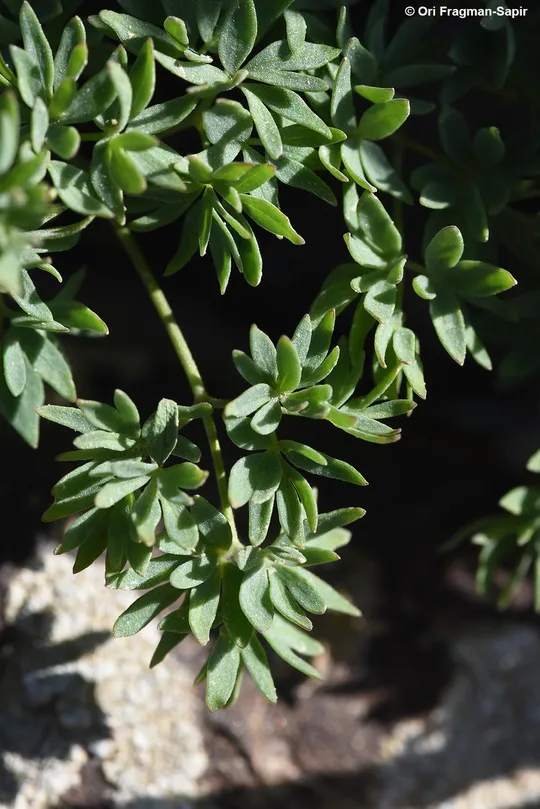
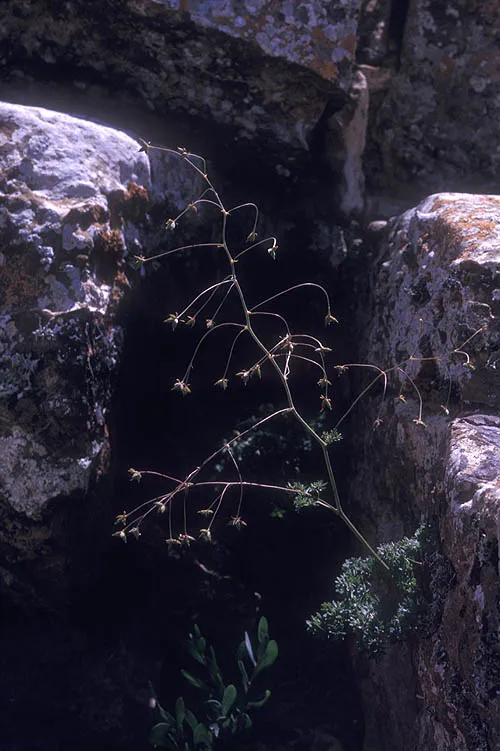
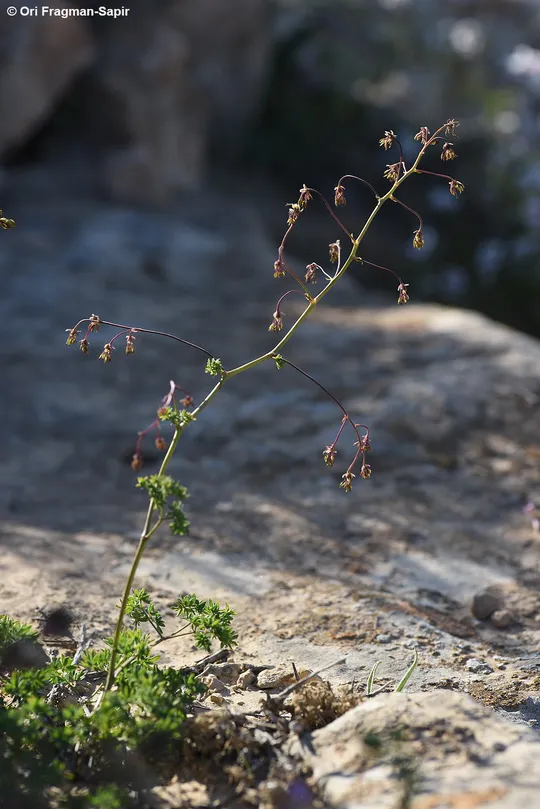
Thalictrum
isopyroides grows in a single region in the country – the Negev Highlands. So far, two sites
have been found there: on Mount Ramon at an altitude of 990 m, and in Wadi Elot near the Lots Cisterns at an altitude of 960 m. Mordekhay Kislev
first discovered T. isopyroides in Israel in 1983,
and since then the population on Mount Ramon is stable. Recently (2.4.05) Yoav
Gertman found another site, 1.5 km west of the Lots Cisterns, with expanses of
blooming T. isopyroides. All the sites are within one section
and only 2-3 km apart.
At the foot
of rocks and in small loess patches in small valleys in high desert mountains above
900 meters. In
Edom, it grows in cushion-plant scrubland of Astragalus bethlehemiticus
and Artemisia sieberi on soft limestone rock, and in rock crevices and cliffs.
Thalictrum is a large genus
of 330 species, found mainly in the temperate regions of the Northern Hemisphere.
In Europe there are 15 species, some of which grow in the tropical mountains of
Africa, New Guinea and in the Andes Mountains. The genus Thalictrum
is a special genus in the Ranunculaceae, which has a separate systematic
status; whereas most of the Ranunculaceae have flowers with large and colorful
petals, Thalictrum "deviated" in its evolution to wind
pollination. Thus its petals are very small, and the
stamens, adapted to wind pollination, are numerous and drooping. Some
species in the genus are pollinated by wind and others are pollinated
by insects.
This is the southernmost species of the genus Thalictrum, and the only one that grows in an arid
habitat. It grows in the mountains of the Fertile
Crescent at the edge of the desert and its small stature and its
sparse inflorescence are adaptations to drought stress. It is very possible
that most of its seeds are the result of self-pollination. The distribution
pattern of dense patches with empty spaces between them implies a substantial
investment in vegetative reproduction. These last two features are typical
adaptations of many perennial species in the transition zone and in the desert.
·
Between
1983 and 2005 only
three sites of Thalictrum isopyroides were revealed in one section in the Lots Cisterns-Mount
Ramon area. The populations are small and patchy. There are years when 80% of the population does not bloom at all.
·
All
the sites are included in the
Negev Highlands Nature Reserve. Only at one site in a small
loess valley is the population endangered due to
military action or unintentional civilian mechanical disturbances.
A thorough survey of the Thalictrum
isopyroides populations in the Mount Ramon-Wadi Elot-Upper Wadi Nitsana triangle should be conducted in March. The populations should be demarcated
and signposted and monitored twice yearly.
In the Middle East and
Central Asia: eastern Turkey, Syrian desert,
northern Iraq, Iran, Afghanistan, the Altai Mountains in Central Asia, and
Armenia in the Caucasus. Interestingly, Thalictrum
isopyroides is not recorded from
Lebanon and from western Syria. The species is common
in patches at altitudes 1,300-1,700 meters along the Shera` Mountains.
Thalictrum isopyroides is a rare perennial herbaceous species that grows in Israel only in the Negev Highlands at 2-3 sites neighboring sites. T. isopyroides is an Irano-Turanian species of high mountains on the edge of the desert, which reaches its global southwestern distribution limit in the Negev Highlands.
Current Occupancy Map
| 1000 squre meter pixel | 5000 squre meter pixel | 10000 squre meter pixel | |
|---|---|---|---|
| number of observations | 0 | 0 | 0 |
| in total pixels | 0 | 0 | 0 |
| Family | Ranunculaceae |
| Classification | On the endangered species list |
| Ecosystem | High Semi-Steppe |
| Chorotype | Irano - Turanian |
| Conservation Site | Mount Ramon, Lots Cisterns |
| Rarity |
1
5
6
|
|---|---|
| Vulnerability |
0
0
4
|
| Attractiveness |
0
0
4
|
| Endemism |
0
0
4
|
| Red number |
1
3.2
10
|
| Peripherality | N |
| IUCN category | DD EW EX LC CR EN VU NT |
| Threat Definition according to the red book | Vulnerable |
 Based on:
Based on:
